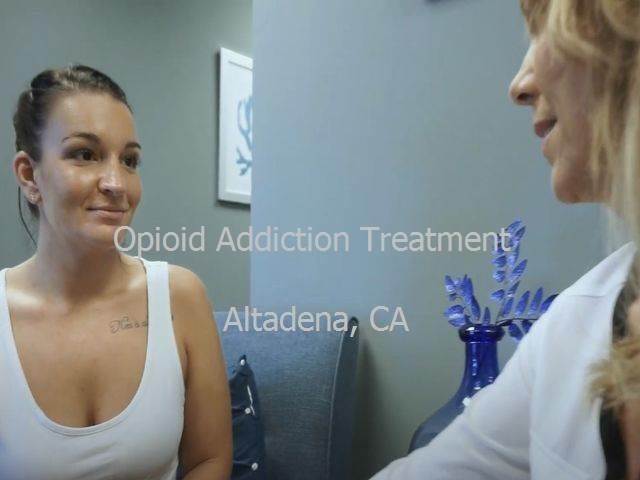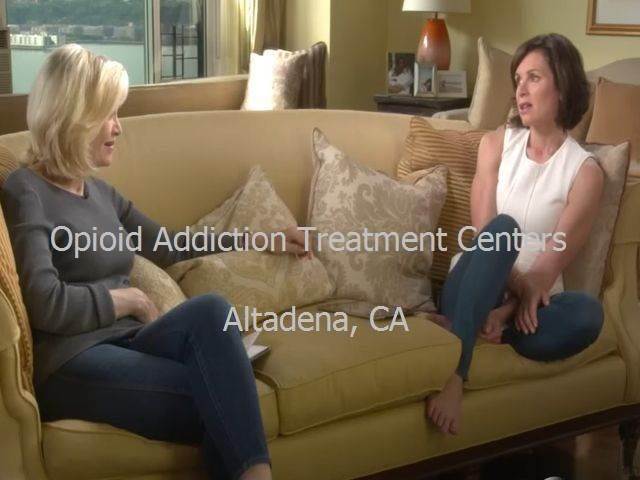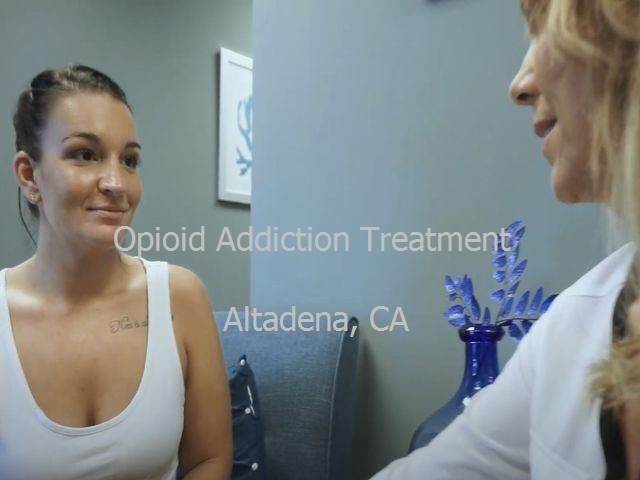Opioid use disorder is a health problem that affects many people in the United States nowadays. Tens of countless people pass away from opioid overdose every year, and many more are battling with opioid addiction. Sadly, instead of going to the hospital to get treatment for substance abuse carries a bad preconception, people try to fight the addiction on their own. This typically causes failure and relapse.
The issue of opioid use disorder in Altadena, California

Even though, nowadays, effective treatments for opioid misuse are ending up being more accessible, a lot of individuals still experience this issue. They frequently blame themselves and their absence of self-control for the failure to combat drug addiction. In reality, this condition is not a type of bad behavior or a sign of moral failure. It is a chronic medical condition that includes considerable changes in certain parts of the brain, a physical dependence that is really difficult to eliminate without professional support. Only recently, doctor came close to comprehending the mechanism of opioid addiction and establishing better opioid treatment programs.
The Altadena, California, opioid addiction treatment center provides several ways of dealing with substance use disorder. Keep reading to learn more about the nature of opioid addiction and which types of treatment provide the patients a greater possibility of successful recovery.
Opioid addiction treatment rehab services
National institutes for health care developed different methods of helping patients with opioid dependence. Some of them involve taking addiction medicine to handle opioid cravings. In some cases, treatment retention is suggested. It is essential to openly discuss your scenario with health care providers to choose the most efficient treatment plan.
Substance abuse treatment include several types:
- Treatment retention. Some individuals wish to escape the environment that motivates opioid misuse. They can not fight drug abuse when they are surrounded by triggers and their family members or good friends have simple access to opioids. The drawback of this method is the need to take a break from work. The favorable aspect of this program is fulfilling people with the same battle and getting their support.
- Outpatient opioid addiction treatment. Patients can continue to work and live as they did while receiving health and human services. They go to medical facility for systematic reviews, therapy and medications. This is a less extreme modification of lifestyle compared to residing in the treatment facilities. Such patients do not risk losing their jobs but require to be responsible about remaining on track.
- Behavioral therapy. This kind of treatment involves educating patients on how to make favorable modifications in their behavior gotten in touch with opioid use disorders. They get access to the entire variety of mental health services such as cognitive behavioral therapy, individual counseling, contingency management, family therapy, support groups, and so on.
- Medication assisted treatment (MAT): medications plus counseling. Whether it is a domestic program or an outpatient health care service, any treatment plan can include taking medications. This type of treatment of opioid misuse has actually proven to be really effective. Unfortunately, it is typically misconstrued and treated with suspicion. Medications that are used to treat opioid addiction come from the group of opioids themselves, so there is a myth that by taking them you merely change one addiction with another. This is not true for two reasons. Initially, the medications do not produce the euphoric effects unlike other opioid drugs. And 2nd, the data reveal that using medical assisted treatment helps to substantially reduce the number of deaths from overdose
- The disadvantage of this type of treatment is that it is not extensively available. Before the practitioners can prescribe these medications, they require to undergo particular training. And after they complete the course, they can just recommend this treatment to a limited variety of clients. For that reason, facilities that provide MAT frequently have a long waiting list. The benefit of this kind of treatment is that thanks to the medications, the patients do not experience serious withdrawal symptoms. The cravings are not so strong also, so many people stay in treatment and are less most likely to regression.
Only a professional clinician educated on substance use disorder can select the best treatment. The physician requires to understand and take into consideration all the aspects that led a person to drug abuse and mental health problems. Contact the opioid addiction treatment center in Altadena, California, to get certified aid.
System of opioid addiction
Opioid drugs hack the reward system of a person’s brain and make the individual feel excellent if they take opioids. Typically, fulfilling such requirements as eating or recreation results in the release of dopamine. This hormone is accountable for the feeling of satisfaction or fulfillment. It rewards people for doing things that are very important for the survival of mankind.
When opioids reach the brain, they attach themselves to certain receptors, which triggers the reward system and creates the feeling of high. People want to experience that feeling again. More importantly, their brain signifies them that taking opioids is the most vital thing for their survival. That is how the addiction settles in.
There are 2 results of this modification in the brain:
- The very first one is the advancement of drug tolerance. People need more drugs to reach a state of bliss. Opioid use disorder often starts with prescription pain relievers. Sometimes clients increase the dose of prescription opioids to get high, and this causes opioid abuse. Some people even change to more powerful drugs like heroin.
- The 2nd result is opioid dependence. Individuals continue substance abuse to avoid withdrawal symptoms. Due to breakdown of the reward system, without the drugs individuals feel restlessness and have a terrible mood.
Other signs of opiate withdrawal consist of:
- Body pains;
- Absence of sleep;
- Nausea;
- Diarrhoea;
- Goosebumps, and so on.
Understanding about the nature of substance use disorders can help physicians inform their clients on what withdrawal symptoms to anticipate and how to handle the yearnings. Depending on the client, physicians select the most effective treatments that may include medication prescription and behavioral therapies. It might not be possible to totally get rid of the opioid addiction, however mental health services can substantially reduce the opioid misuse and the number of heroin overdose deaths.
Opioid addiction should be dealt with the way one would deal with a persistent disease. Individuals suffering from drug addiction are motivated to join the Altadena, California, rehab programs and enhance their health and overall lifestyle. As soon as you give up the drugs, return for maintenance treatment.
Who can get treatment for opioid abuse in Altadena, CA?

People typically feel embarrassed to go to the health center for opioid abuse treatment. There are two main factors for this: they are either scared to have a bad image in the neighborhood or have actually already given up on themselves. However these issues must not dissuade clients from fighting substance use disorders. Anyone is complimentary to reach rehab centers and see what help they can get.
2 main categories of opioid use disorders are treated with Altadena, California, rehab programs:
- Prescription drug abuse. Opioids are normally prescribed in the form of pain relievers for chronic or severe pain. It is possible to develop addiction to these medications. As a result, some clients start to misuse opioids and take larger dosages of them. National institutes such as the Center for disease control produced suggestions on how to help these clients gradually reduce the drug use.
- Heroin addiction. This condition routinely comes from the previous one. But some individuals rely on this drug for recreational purposes. Battling heroin addiction is really hard, and patients ought to utilize all the treatment resources they can access. Even then, it typically takes numerous efforts to beat the condition.
The most effective treatments normally consist of both mental health services and medications.
Frequently Asked Questions – FAQ
Is opioid addiction a mental illness?
Opioid use disorder is a persistent brain condition. Initially, people might turn to drugs because of personal concerns. That is why substance abuse and mental health are typically treated simultaneously. A lot of patients benefit from therapy, behavioral therapies and support groups. But it is very important to bear in mind that opioids make considerable changes to the brain, making it extremely hard to combat the addiction without medications.
What medications are used to treat opioid use disorder in Altadena, California?
National institutes authorized three medications for treatment of opioid drug abuse: methadone, buprenorphine and naltrexone. They have various names and impacts on the brain. The first 2 medications change the opiates and smooth the withdrawal symptoms without making the patients high. Naltrexone blocks the mu-opioid receptor, working as an opioid antagonist.
How do I get medication-assisted treatment in Altadena, California?
Only a certified clinician can prescribe you medications for opioid use disorder. Visit the workplace of a health care provider that completed the necessary training and request a program of medication-assisted treatment.

